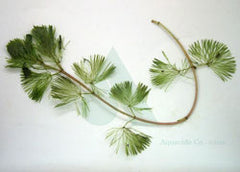
An invasive aquatic plant known as fanwort is an exotic beautiful plant that poses significant threats to inland lakes.
Fanwort is native to South America, it is a popular aquarium plant and is thought to have been brought to the United States through the aquarium trade. It’s identified by intricate fan shaped leaves and white-pink floating flowers. It is a highly aggressive and invasive plant that can rapidly force out native aquatic plants and readily form monocultures in depths up to 3 feet. It is unknown how it spreads.
There is one active ingredient know to be effective called furidone. The problem is, furidone is only effective when it is treated at a level of 10-20 ppb.1
2,4-D butyl ester is also used to control cabomba with a high degree of success. After treatment of the affected area with the herbicide 2,4-d butyl ester, all cabomba was killed and has never returned.2
Once the invasive species is there it can be hard to eradicate, especially if you are also dealing with other invasive species like Starry Stonewort and Eurasian Milfoil.
Hand pulling is pretty much futile, unless we are talking about a plant here and there, which is almost never the case.1
Drawdown works on both if the target area can truly be dewatered and frozen for at least one month. This is hard to do because muck sediments often protect the plant root systems and allow considerable survival.1
There are no biological controls for this species.
Prevention is key. Always check to make sure there aren’t plants attached to your boat or trailer before you launch.
(Oakland Lakefront October 15, 2009) (www.savetheyaphanklakes.org/initiatives/K_Wagner.htm1
www.nt.gov.au/nreta/natres/find/cabomba/eratication.html2
